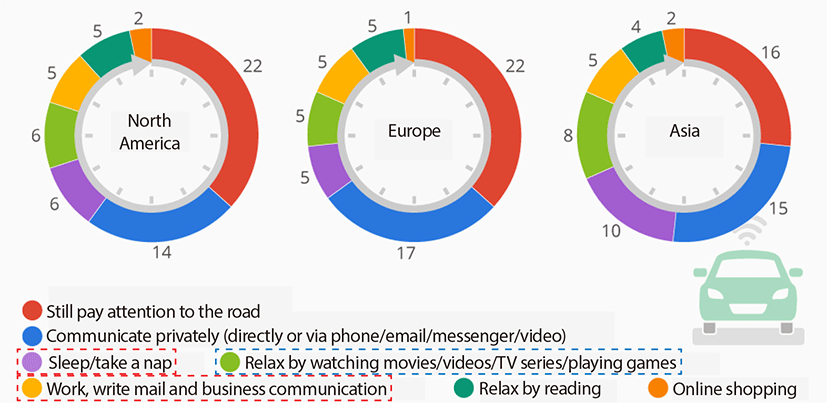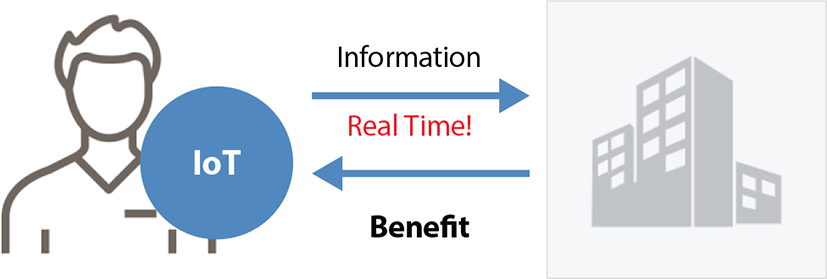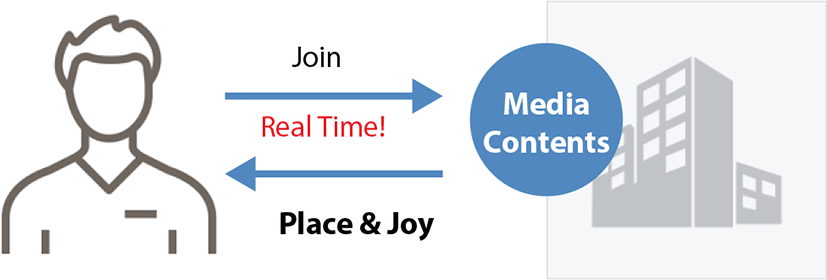Introduction
What is the most important factor behind the growth of global companies, such as Facebook, Youtube, Netflix, Instagram and UbiSoft, which have grown rapidly since 2010? (Cherney, 2018) Their growth is in line with the time when LTE (long term evolution, 4G) was commercialized and diffused worldwide in 2011. What the companies have in common is that they have provided a service to communicate with customers through high-quality media based on smartphones. Before LTE, voice-oriented 3G performance was not enough to function properly. Under 3G infrastructure, which has an average speed of 2Mbps, YouTube’s HD (high definition)-class streaming service was never available (Stofferahn, 2014). SNS services that share high-resolution photos taken in real time, such as Facebook or Instagram, were difficult to counter with 3G network performance.
After LTE was commercialized in 2011, rapid data speed and unlimited data rate system started to make image uploading and downloading easier on our smart phones. Companies wanting to use this to communicate with customers began to increase and consequently began to change from communication using traditional TV, radio, and internet to mobile communication. It is now the 5G era. 5G has 20 times faster transmission speed, 10 times faster response speed, and 10 times more capacity performance than 4G. (Refer to 5G performance vision presented by ITU; Wall, 2018; Table 1).
Assuming that a 700M image is received, this indicates that it can be downloaded within 0.3 seconds. It is a surprise that these improvements in performance will enable innovation in services related to ultra-high capacity, ultra-low latency (ultra-real-time), hyper-connections and super-fastness that could not be achieved at 4G. ‘5G era is coming’, which was published by the ETRI 5G Business Strategy Office (2017), predicted that 5G will be able to provide the following five services (Oh & Hong, 2017; Table 2).
Note. Adapted from 5GEra Comes, by ETRI 5G Business Strategy Office, 2017, Seoul, Korea: Contentshada.
As such, 5G will promote development of information and communications technologies (ICTs) such as mixed reality, virtual reality, artificial intelligence, self-driving, IoT (internet of things), etc. By utilizing these technologies, it is expected that communication with customers will replace communication that uses other media due to the following advantages (Condoluci & Mahmoodi, 2018).
-
Until now, a company’s method of communication with customers has been one-sided, but in the future, ‘twoway’ communication can be made between customers and businesses.
-
Instant ‘real-time’ communication is possible when the customer has a requirement for the enterprise.
-
Different from traditional media (TV, internet, SMS, etc.), unique and attractive communication is possible.
ICT-Based Communication Methods with Customers
IoT is an object that is equipped with various sensors and communication modules (Wu, Wu, & Yuce, 2019). It can collect various data through sensors attached to objects, share them through the Internet, and even control them. The most representative products are the smart watch, also known as a health band. If you wear it on your wrist, it sends data to your smartphone on how many steps you’ve taken. There is a company that used this product to actively communicate with their customers (Sinclair, 2017).
The insurance company, Oscar Healthcare Insurance, collaborated with Misfit, which manufactures and sells health bands to launch a program to directly link customers’ exercise information to insurance premiums (Comstock, 2014). The Misfit is distributed free of charge to customers who subscribe to insurance, after which the number of steps is delivered to the company every day. If a given goal is achieved, a dollar shall be set aside. It is a program that provides up to $240 a year for Amazon Gift Cards if the user achieves his or her goal 20 times a year. The reason insurers offer a free Misfit for about $20 is that achieving the mission they provide will improve their health and, consequently, reduce the health insurance payments paid to customers.
Another case of IoT is “smart tape measure.” The mobile shopping mall called “On” introduced a smart tape measure called XYZE (XYZE Fashion, 2015). The XYZE smart tape measure is equipped with sensors that can automatically measure and deliver a body’s measurements. It has been used as a means to reduce return rates by size errors, one of the biggest problems with online shopping malls. Smart tape measure automatically conveys the size customers need to businesses.
IoT technology is able to collect customer information that businesses want in real time, and customers can obviously benefit (Weber, 2018). This enables customized communication with customers. Customers prefer companies that are aware of their needs and communicate with them. IoT is a technology that enables personalized communication for these customers (Jackson, 2016; Figure 1).
Mixed reality technology is already being used within many businesses to provide customers with a unique experience. Pepsi ran the Bus Shelter Mixed Reality Campaign (Kastrenakes, 2014). It is a campaign that installed a large TV screen instead of glass in a bus platform, giving the illusion that there are actually UFOs, monsters, and tigers on the other side of the screen (Blokdyk, 2019).
A customer waiting at the bus stop looks at the back of the screen in amazement. Then he notices that it’s a screen, not a glass, and he gets a strong impression on Pepsi commercials. Pepsi has increased the recognition rate of messages it wants to deliver through augmented reality.
At the Sunshine Aquarium in Tokyo, the company has developed a mixed reality penguin navigation app (Holly, 2014). The purpose of the app is to make the actual distance of 1 kilometer from Tokyo Station to the Aquarium psychologically short.
After arriving at Tokyo Station, the Sunshine Aquarium app shows penguins and guides them to the aquarium. On purpose, customers (especially children and parents) visit Tokyo Station to experience the app with cute penguins and run it. And with the guidance of a virtual penguin, we have a pleasant trip to the Sunshine Aquarium. Augmented reality provides a unique experience for customers. Augmented reality enables companies to provide a pleasant experience to their customers in real time while they visit or make a purchase (Hackl & Wolfe, 2017; Figure 2).
V2X (vehicle to X [Infra: vehicle, person, etc]) is a concept that can prevent unforeseen accidents that occur during autonomous driving by providing collected information to infrared systems, customers, or other vehicles based on a number of IoTs attached to vehicles, roads, and people (Kenton, 2017). While LiDAR (light detection and ranging) or cameras only deal with what is seen, V2X can further enhance the safety of self-driving cars by penetrating buildings and turning corners to determine what is going on and predict what is going on ahead in advance.
It is expected that V2X sensors will help maximize the safety of self-driving cars because they can look at corners, display of objects, share information between vehicles/traffic devices, and predict according to weather conditions. However, communication is required to execute V2X. 5G compared to 10ms low-performance of current LTE is 1ms and can guarantee stability of 10 times or more. The reason the law on driving self-driving cars is still pending is because of safety. If 5G is established with nationwide LTE level coverage, it will be possible to commercialize self-driving cars within a few years, and the era of self-driving cars will soon open.
If the era of self-driving cars opens, drivers will have new time to spare. Around a billion drivers worldwide will do other things in their cars instead of driving. While some may still focus on driving, 80 percent of drivers will consume SNS (social network service) or media (Zakharenko, 2016). Communication with customers in self-driving cars is also a new opportunity. Media content companies such as Disney and Warner Bros. are taking the lead.
First of all, Disney, which owns Marvel, has developed a service with Audi that utilizes VR (virtual reality) to communicate with drivers in self-driving cars (Herman, 2019). The occupants of the vehicle wear a virtual reality head-up display when travelling in a self-driving car. Depending on the driving pattern of an autonomous car (stop, turn right, turn left, back, advance, speed up, speed down, climb, descent, etc.) the game or image in the virtual reality moves with the same pattern.
However, the contents of virtual space are interesting and interesting unlike real life. For example, if a car stops at a crossing, the car in the virtual world stops at the same time. If a self-driving car turns a curve to the right, my car in a virtual world also moves to the right.
You can also experience traveling with Iron Man and Jurassic Park’s pterosaurs while traveling. And Warner Bros. also started to work with Intel and BMW to think about how to apply media to self-driving cars (Kulp, 2019). Disney and Audi versions had to wear HMD (head up mounted display), but Warner Bros. changed the entire vehicle window to a screen. It has adopted a method that gives the impression of driving in a car in a virtual world without wearing HMD. Through self-driving cars, you can experience driving in Gotham City by using a bat car.
Major content companies with original IP view the self-driving market as the next market after OTT (over the top) because there are hundreds of millions of drivers who have time to spare by changing their cars to self-driving.
According to UBS’s Revenue Pools in an AV World, the new market for self-driving cars is expected to be the ‘Robot Taxi Service Market’ and ‘In Car Time Monetization.’ In other words, ‘In car Time Monetization’ includes media and games that are consumed in a car without driving. According to the World Automobile Statistics 2017, there are hundreds of millions of motorists worldwide, with 270 million drivers in the United States, 21 million in South Korea, 75 million in Japan and 190 million in China (Wagner, 2017; Figure 3).

Consumption of media in self-driving cars means increased opportunities for media-based communication. We need to keep an eye on this new field of communication in order to actively use it.
The boundaries of entertainment are breaking down. The era of unilateral delivery of information to customers like existing radios and TVs is over. Millennials are crazy about games. They want to take the lead. The younger millennials, who have always been under parental control, are becoming more self-driven. They want to decide, act and take responsibility for themselves, but they don’t even have the chance and the time to do so. Their enthusiasm for the game seems to be in the same vein.
Broadcasting is also changing with the characteristics of this millennial generation. Already they don’t want to be tied up in time and place. It prefers the SVOD (subscription video on demand) of OTT to traditional TV to consume video at any time and place it wants. Furthermore, they want to take the initiative in controlling broadcasting like a game. In addition, because they are used to search for information through the Internet, senior TV viewers are used to receiving only passive information from TV, but the current generation is used to directly searching for new information.
This tendency of millennials (self-drivenness and habituation of ‘game and Internet browsing’) is promoting not only OTT but also interactive and interactive video consumption trends. Quiz shows and two-way television are representative. In May 2018, quiz show leader HQ Trivia received NBC’s sponsorship. And HQ Trivia produced a quiz show to bring in customers on NBC’s flagship program The Voice. This brought together some 1.4 million people, and the effect of improving The Voice’s awareness and bringing customers directly into the program was achieved. The method was to induce HQ Trivia to watch The Voice program by providing a hint of the quiz on the eve of the quiz. In September 2018, the company participated in a quiz show sponsored by Disney, earning a strong branding effect, especially as Disney invested in Intermedia Lab, a company owned by HQ Trivia.
Netflix unveiled its first true two-way drama for adults on Dec. 28, 2018. It’s a drama called BlackMirror that tells the strange story of a programmer who makes video games (Reynolds, 2018). Viewers are in a situation where they have to make decisions on the part of the main character in the middle of the show. ‘Which cereal will you eat, Sugar Puff or Frost?’ ‘Do you work with TuckerSoft? Or not?’ ‘Are you going to talk about your mother? Or not?’ The viewer should make a decision instead of the main character in the drama. Each decision can result in more than 10 different conclusions.
The advantages of true two-way dramas are expected to maximize marketing effectiveness against existing programs. The biggest advantage is the advertising effect. Beyond the simple PPL, it is expected that the advertising effect of the product will be greater than any other medium, since the audience will have to choose the product themselves (e.g., cereal selection). Furthermore, it is possible to know which products are selected by which customers, and to customize advertisements using their data. Another marketing effect is an increase in viewership. Naturally, an increase in viewer ratings leads to a rise in advertising sales. This is because the fans who watch the same drama several times to watch various endings will encourage repetitive viewing like games. In addition, illegal distribution is also preventable because it is difficult to duplicate contents (Figure 4).
Relay, the hotel’s minibar robot, is also helping to boost sales through a unique customer experience (Lawson, 2018). According to relay developer Savioke, the increase in sales of minibars has increased because of Relays. Los Angeles’s Residence Inn by Marriott said it had increased sales by $ 1,700 a month after introducing Relay. ($ 2 shipping revenue per delivery and increased customer use of minibars for a different experience). This case is a case of attracting customers again by applying robots for an existing service. In other words, it is a case of success by changing the communication method with customers based on ICT technology.
The company’s Rossiya 24 robot replaced Alex’s anchor with the news (Luhn, 2019). In March 2019, Xin Xiaomeng Robot Announcer, which replaced Qu Meng Announcer, also delivered 3,400 articles (Cheng, 2019). In general, the announcers do not need to express emotions because they are expressionless. And 24 hour news delivery is required. When communicating with customers, it can be expensive to cover with human resources. In this case, cost-effective communication is possible by applying robot technology. As such, it is expected that communication with customers using robots will help revitalize existing classic services in areas that require excessive human labor and unique customer experiences.
Discussion
Advances in ICT technology provide companies with new opportunities for communication (Martin, 2018). In particular, companies such as IKEA and Nescafe are taking the lead in introducing ICT technology. IKEA, for example, is developing augmented reality apps called Assembly and Place to communicate with customers (Jardine, 2017). The Place app gives you the ability to choose furniture to match your environment, and the Assembly app gives you the ability to easily assemble your furniture. When communicating with customers, I focused on visual communication rather than sound.
And Nescafe succeeded in clearly delivering the image of Nescafe ‘Connection’ to customers through campaign such as Hellobench and Nescafe Instant Connection, which actively use ICT Technologies (Smith, 2017). If you go to their homepage, the following will decorate the first screen. “Whether over a stimulating morning coffee, a late afternoon latte or an after-dinner espresso, we love real connections that lead to new starts, new ideas or simply great chats. Come, have a coffee with us!” For the Nescafe Instant Connection campaign, they set up devices with video calls and espresso machines at traffic lights. And they greet each other by chance on both sides and watch each other’s videos of video calls at the same time and press the button for free coffee. The Nescafe Hello Bench campaign is equipped with sensors on the bench, and if the strangers sit far away from each other and enjoy the Nescafe, the bench will be narrower and closer together, giving them the opportunity to enjoy coffee together. Likewise, global major non-IT companies are actively using ICT. However, the way they communicate with customers using ICT technology is always changing (Shamsuzzoha, Toscano, Carneiro, Kumar, & Helo, 2016). Already, the communication method using drones and ASMD (adoptive source multi device) has become out of fashion, even before it is fully applied in Korea. ICT changes so quickly. One way to deal with this is to continually benchmark other industries and global companies. It is necessary to see how they are using ICT technology to communicate with customers and to replicate and execute them quickly.
If new media services such as augmented reality, various quiz shows and interactive TV are utilized, customers can be brought to stores, shopping malls and various contents through indirect and unique experiences. In the future, if self-driving cars are commercialized in earnest, hundreds of millions of drivers will have leisurely time inside self-driving cars. Several content companies have come up with ways to communicate with customers through screens and virtual reality inside self-driving cars. ICT technology changes very quickly.
Other novel ICT technologies are also coming out. In order to communicate with customers, it is best to apply the latest ICT technology that will attract the customer’s attention (Kadiri et al., 2015). But incorporating the latest technology directly is costly and time consuming. For example, it is the right time for augmented reality, already developed many years ago, but it is not the right time for virtual reality. Since augmented reality development solution has been disclosed mainly among smartphone OS companies, an environment for rapid development at a low cost has been established. New ICT new technologies are coming out every day. Among the many ICT technologies, when communicating with customers, the criteria for choosing the most efficient technology is very important. In consideration of business domain and economic feasibility, it is necessary to select and combine the best ICT technology to attract customers and lead to management performance.
Conclusion
By virtue of 5G telecommunication infrastructure, an environment was established where ICT technologies could be freely utilized ‘on the go’ or ‘on the outside’. While various social network services of smartphones have been basic to communicate with customers while on the move, communication using IoT, ultra-high definition media, augmented reality, virtual reality and self-driving cars is sure to become a major medium in the future. If IoT is used, a company can understand what customers want through sensors and provide what customers need immediately. If new media services such as augmented reality, various quiz shows and two-way TV are utilized, customers can enter stores, shopping malls and various contents through unique experiences. In the future, if self-driving cars are commercialized in earnest, hundreds of millions of drivers will have a leisurely time inside self-driving cars. This new free time is a new opportunity to communicate with customers.









